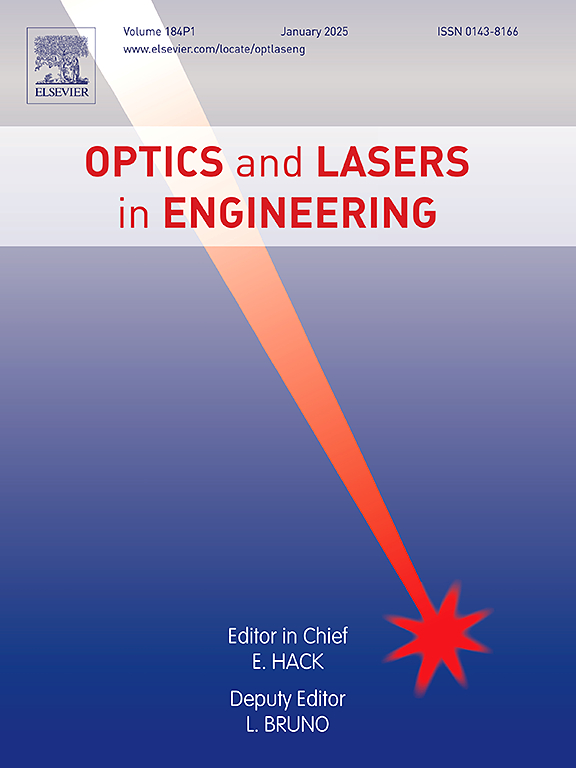Hilbert transform–assisted phase-shifting profilometry resistant to motion-induced errors
IF 3.5
2区 工程技术
Q2 OPTICS
引用次数: 0
Abstract
The phase-shifting method is widely used for phase calculation in fringe projection profilometry but suffers from motion-induced phase errors (MIPEs) in dynamic measurements due to motion-induced phase shifts (MIPSs). Existing methods for mitigating the MIPEs typically rely on assumptions such as temporally linear or spatially uniform MIPSs, limiting their applicability in practical scenarios. To overcome these limitations, this paper presents a novel method that reduces phase errors induced by various types of motion. The method first estimates the MIPSs from the background-removed and Hilbert-transformed fringe images. It then compensates for the MIPEs by incorporating the estimated MIPSs into the phase calculation. Finally, the phase is iteratively optimized using the updated fringe background. The boundary effect of the Hilbert transform is also mitigated in this method. By removing the restrictive assumptions of existing methods, the proposed method can handle objects with complex shapes and motions. Experimental results demonstrate its effectiveness, achieving up to 87.47% additional reduction in MIPEs under non-uniform motion compared with the state-of-the-art method, while maintaining similar performance under uniform motion. Overall, the proposed method is effective and robust in practical dynamic measurements.
希尔伯特变换辅助相移轮廓术抵抗运动引起的误差
相移法在条纹投影轮廓术中被广泛应用于相位计算,但在动态测量中由于运动相移而存在运动诱发相位误差。缓解mipe的现有方法通常依赖于时间线性或空间均匀的mips等假设,限制了它们在实际场景中的适用性。为了克服这些限制,本文提出了一种新的方法来减少由各种运动引起的相位误差。该方法首先从去背景和希尔伯特变换后的条纹图像中估计mips。然后通过将估计的mips合并到相位计算中来补偿mips。最后,利用更新后的条纹背景对相位进行迭代优化。该方法还减轻了希尔伯特变换的边界效应。通过消除现有方法的限制性假设,该方法可以处理具有复杂形状和运动的物体。实验结果证明了该方法的有效性,与最先进的方法相比,在非均匀运动下,mipe的额外减少高达87.47%,同时在均匀运动下保持相似的性能。总的来说,该方法在实际的动态测量中是有效的和鲁棒的。
本文章由计算机程序翻译,如有差异,请以英文原文为准。
求助全文
约1分钟内获得全文
求助全文
来源期刊

Optics and Lasers in Engineering
工程技术-光学
CiteScore
8.90
自引率
8.70%
发文量
384
审稿时长
42 days
期刊介绍:
Optics and Lasers in Engineering aims at providing an international forum for the interchange of information on the development of optical techniques and laser technology in engineering. Emphasis is placed on contributions targeted at the practical use of methods and devices, the development and enhancement of solutions and new theoretical concepts for experimental methods.
Optics and Lasers in Engineering reflects the main areas in which optical methods are being used and developed for an engineering environment. Manuscripts should offer clear evidence of novelty and significance. Papers focusing on parameter optimization or computational issues are not suitable. Similarly, papers focussed on an application rather than the optical method fall outside the journal''s scope. The scope of the journal is defined to include the following:
-Optical Metrology-
Optical Methods for 3D visualization and virtual engineering-
Optical Techniques for Microsystems-
Imaging, Microscopy and Adaptive Optics-
Computational Imaging-
Laser methods in manufacturing-
Integrated optical and photonic sensors-
Optics and Photonics in Life Science-
Hyperspectral and spectroscopic methods-
Infrared and Terahertz techniques
 求助内容:
求助内容: 应助结果提醒方式:
应助结果提醒方式:


